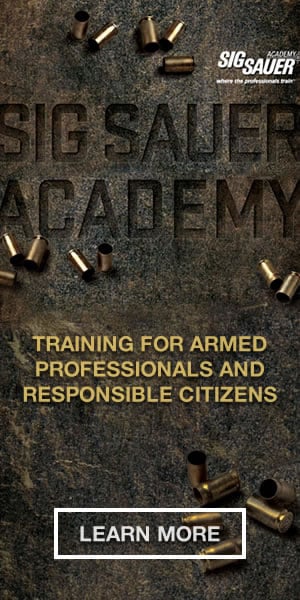Don't panic, Substitute House Bill 228 (HB 228) is all good news-which is rare in the face of this years wide-ranging attacks on gun owners. Oh, and get prepared for a brand-new major onslaught against gun owners coming from the U.S. House of Representatives in 2019 once the democrat party takes over the reins-but I digress. I wanted to take some time to cover the most important aspects of HB 288, since a number of key provisions of it have not been mentioned in the news.
HB 228 passed the Ohio House of Representatives on November 14 by a vote of 64-26. It will likely pass the Senate is well, but outgoing Governor Kasich has promised to veto it. It remains to be seen if it can pass by as wide a margin in the Senate to ensure that a gubernatorial veto can be overridden. If it fails to pass in this session, it will certainly be taken up again in the 2019 Session and hopefully incoming Governor DeWine will sign it into law.
HB 228 has been touted as the "Stand your Ground" law by a new generation of hysterics who claim it will cause all sorts of mayhem and death in the streets of Ohio. The rallying cry is the same as the previous generation of naysayers who claimed in 2004 that if Ohio passed the same "Shall Issue" Concealed Carry Permit system that around 40 other states had at that time that there would-and I quote- "be blood running in the streets of Ohio" caused by law-abiding citizens carrying lawfully concealed handguns. Many of the folks making the claim were prominent law enforcement officials who should have known better. All they had to do was look at what was going on in the other states that had similar laws for years and they would have known that mass homicides by crazed permit holders never happened. To the contrary, violent personal assaults had gone down in those states. In the end, no one in Ohio ever had to buy galoshes to trod through the rivers of blood that had been promised.
Current Ohio law allows you to stand your ground-meaning that you have no duty to retreat first when faced with a deadly force threat-in your home or dwelling place such as in a home invasion situation, or in a vehicle when faced by a carjacker or other such assailant. That's a great start, but it doesn't cover you when you are walking down the street. HB 288 closes that loophole.
Here is how the law is modified in HB 228. The strikethrough portion of the text shows the former Ohio Revised Code language that is being removed in favor of the modified legislation.
For purposes of any section of the Revised Code that sets forth a criminal offense, a person who lawfully is in that person's residence has no duty to retreat before using force in self-defense, defense of another, or defense of that person's residence, and a person who lawfully is an occupant of that person's vehicle or who lawfully is an occupant in a vehicle owned by an immediate family member of the person has no duty to retreat before using force in self-defense or defense of another if that person is in a place in which the person lawfully has a right to be.
As you can see, under the new HB 228 language, you would have no duty to retreat if you found yourself under a deadly force threat while on the street, as long as you were lawfully there (which excludes people who are in the process of committing a crime when they used deadly force).
Let's talk for a minute about the important practical aspects of standing your ground in a deadly force situation, since just because you CAN do a thing, doesn't mean that you SHOULD do a thing.
Being in any sort of deadly force confrontation is the last thing anyone-including law enforcement officers-want to be involved in. Besides the risk of injury or death, there is a multitude of potential legal problems that will follow, or-depending on who the perpetrator was-a possibility of retribution being taken by the criminal decedent's friends or family. It is something that will forever change your life, even if everything goes "right".
This means that you should first attempt to avoid a deadly force confrontation by being aware of your surroundings, avoiding high risk areas, and having additional precautions taken. How about staying off the smart phone for a while and watching what is going on around you? And, certainly, you should exit an area once the trouble starts or looks to be imminent if you can do so safely. While law enforcement officers may not have the luxury of leaving a call when things get dicey, you may be able to and if you can do it without further jeopardizing your safety, then that is the solution to the problem to choose.
But HB 228 would be there to protect you if you found yourself in a situation while minding your own business-on foot-out in public when you don't have time to retreat or can't risk turning your back on the impending threat. It closes the loophole in the law that allows you to defend yourself in your home or vehicle without retreating, but not while on foot. HB 228 also specifically lists the criminal circumstances in which stand your ground doesn't apply. A citizen lawfully defending themselves should clearly have the same right to exercise self-defense as effectively in terms of tactics as a police officer does, and HB 228 would insure this.
To make clear the intent of HB 228 and to leave no doubt, Line 48 of the bill importantly declares this;
"The general assembly also finds and declares that it is proper for law-abiding people to protect themselves, their families, and others from intruders and attackers without fear of prosecution or civil action for acting in defense of themselves or others." That declaration is absolutely outstanding.
But the "stand your ground" portion is only a small part of this HB 228. It also amends and repeals numerous sections of the Ohio Revised Code to accomplish the following goals; (from the HB 228 "preamble");
"...to modify the state preemption of local firearm regulations and related remedies; to assign to the prosecution the burden of disproving a self-defense or related claim; to expand the locations at which a person has no duty to retreat before using force under both civil and criminal law; to limit the use of the affirmative defense of self-defense, defense of another, or defense of a person's residence under both civil and criminal law; to modify the Concealed Handgun Licensing Law regarding the carrying of additional identification and a licensee's duty to keep the licensee's hands in plain sight; to modify penalties for illegally carrying a concealed firearm or improperly handling firearms in a motor vehicle; to expand the offense and penalties for unlawful transactions in weapons; to repeal the required posting of warning signs regarding the possession of weapons on specified premises; to provide an affirmative defense to improperly handling firearms in a motor vehicle for handguns in the vehicle without the defendant's knowledge; to generally bar any subsidized residential premises lease from requiring a tenant to agree to a restriction on a lawful firearm, a firearm component, or ammunition within the tenant's rental dwelling unit; and to exclude certain firearms from the definitions of sawed-off firearm and dangerous ordnance."
As you can see, there are so many needed changes and additions to Ohio Law in HB 228 that it prevents me with my limited space of discussing it all in this column, and you won't hear about them in the news. I recommend that you look the legislation over yourselves, and be ready to support it through the rest of this legislative session and into the next. HB 228 can be found in its entirety here: House Bill 228.


